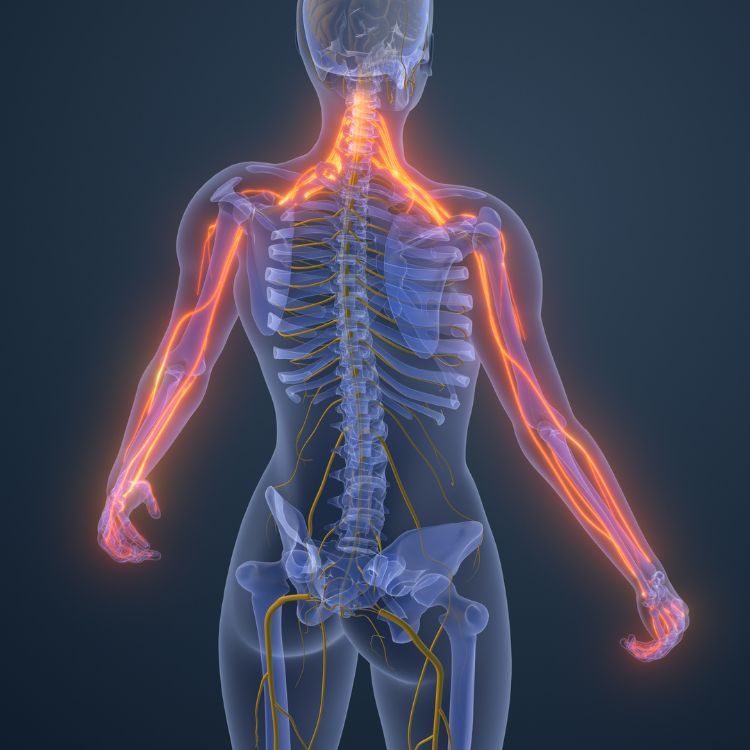What Causes Cervical Radiculopathy?
Several underlying conditions can lead to cervical radiculopathy, including:
- Herniated Disc – When the soft inner portion of a spinal disc pushes through its tough outer layer, it can press on nearby nerves, leading to pain and weakness.
- Degenerative Disc Disease – As spinal discs naturally wear down with age, they lose their cushioning ability, increasing pressure on the nerves.
- Bone Spurs (Osteophytes) – Extra bone growths can form along the spine due to arthritis, narrowing the spaces where nerves exit the spine.
- Spinal Stenosis – A condition in which the spinal canal becomes narrowed, putting pressure on the spinal cord and nerve roots.
- Trauma or Injury – Car accidents, falls, or sports injuries can lead to fractures, disc damage, or inflammation that compresses the nerves.
Symptoms of Cervical Radiculopathy
Since cervical nerves extend down the arms and into the hands, symptoms often radiate beyond the neck and may include:
- Neck pain – Ranging from mild discomfort to sharp, severe pain
- Radiating pain – Burning or shooting pain in the shoulders, arms, or hands
- Numbness or tingling – Often felt in the fingers or along the arm
- Muscle weakness – Difficulty gripping objects or performing fine motor tasks
- Loss of coordination – Reduced control over hand and arm movements
Symptoms can worsen with certain activities, such as looking down at a phone, sleeping in an awkward position, or holding the head in one position for an extended time.
Diagnosis and Treatment Options
How Is Cervical Radiculopathy Diagnosed?
A pain specialist will conduct a physical examination, testing reflexes, muscle strength, and range of motion. Diagnostic imaging, such as MRI, CT scans, or X-rays, may be used to determine the underlying cause of nerve compression.
Treatment Options
Many cases of cervical radiculopathy can be treated without surgery. Common treatments include:
- Physical Therapy – Strengthening and stretching exercises help relieve pressure on nerves and improve mobility.
- Medications – Anti-inflammatory drugs, muscle relaxers, and pain relievers can reduce symptoms.
- Epidural Steroid Injections – Corticosteroid injections help reduce inflammation and relieve pain.
- Chiropractic Care – Spinal adjustments may improve alignment and reduce nerve compression.
- Lifestyle Modifications – Posture correction, ergonomic adjustments, and activity changes can prevent further irritation.
For severe cases that do not respond to conservative treatment, surgical options, such as discectomy or spinal fusion, may be considered to relieve nerve compression and restore function.


